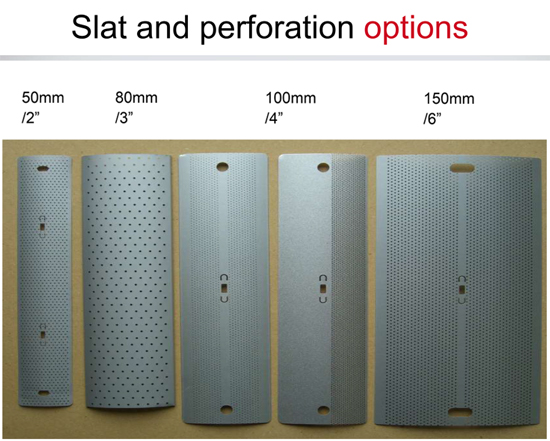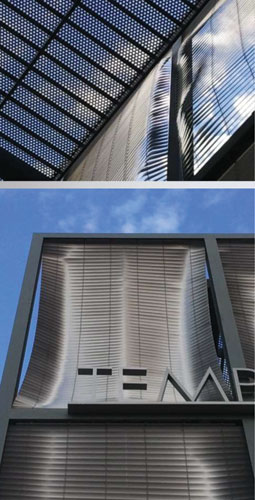Managing Heat and Light Through Exterior Shading Systems
Wind, Ice, and Durability Considerations
Although these systems, and particularly the slats, can appear lightweight they are in fact very durable and can withstand significant wind speeds of up to nearly 40 mph. In normal operation, the slats would be moved to the open position to allow an equalization of pressure on both sides of the blind at around 30 mph. They would fully retract at higher wind speeds. Consider the wind force as you put a hand out of the window of a car that is travelling at 30 mph. The wind override in an automatic system overrides all other controls to ensure that the blinds are not deployed when there is a risk of damage through strong winds.

Image courtesy of Draper, Inc.
Exterior venetian blinds should be retracted into a pocket when they are not being used to protect them from the wind and, probably more importantly, from ice. For a head box to be effective, it must be water tight. If not, water can get onto the blind and freeze if the temperature subsequently fell below freezing. If it is bright and sunny the following day and the system is deployed, problems can arise if the system is iced up. Such was the case at a project in Iowa where the slats were dramatically bent. The flexible slats that are used with venetian blinds, however, are very durable and none of the slats needed to be replaced. This problem effectively demonstrated the durability of the system—it could have been avoided, however, if the head boxes had been properly constructed.
In another example, exterior venetian blinds on a project in Tempe, Arizona, were installed with the slats running between side 'C' profiles. They were also set about 8 feet away from the glazing, which meant that the systems were more affected by wind than would have been the case if they had been installed close to the glass. The slat area deflected under wind load, the slats came out of the channels and got caught at the top and bottom. Once again, the slats appeared to be bent and irreparably damaged but, in fact, were perfectly OK when the issue was resolved. To address this particular problem, the slat width was slightly reduced so that the slat edges were just inboard of the channels and not between them.

Photos courtesy of Progressive Commercial Interiors
The blinds in the images above were affected by strong winds but amazingly none of the slats were damaged.









